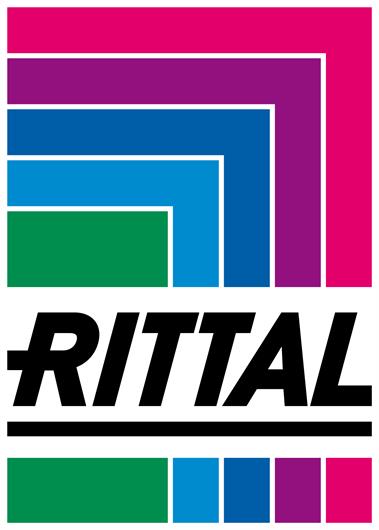 Add My Company
Add My Company
Sign In

By Mark Guest, Rittal’s Product Manager for IT Power Distribution
For most companies, reducing energy consumption across their business is an on-going imperative. The arguments for doing so are overwhelming, whether in connection with lowering the organisation’s carbon footprint or reducing overheads.
Nowhere is this truer than in the data centre sector. Indeed, research suggests that energy efficiency ranks alongside a stable supply of electricity (24/7) as the most important issue for data centre operators.
This is certainly driving the growth in more energy efficient data centres, although it’s also true to say that in recent years IT capacities have risen sharply and this has driven energy requirements upwards. The industry has responded by reinventing IT cooling with the development of in-line cooling and aisle containment systems that thereby reduce energy consumption.
There is another factor that can influence energy efficiency, and that is the internal power distribution system, which can be optimized via the Power Distribution Unit (PDU).
It’s an area where Rittal’s team will be on-hand to offer expert guidance to users at Data Centre World 2020.
Our power distribution team will be on-hand able to advise show visitors how to:
• Select the right PDU
• Maximise the efficiency and reliability of their system
Selecting a PDU
Selecting a PDU is based around four principles:
1. Does it do the job?
You should consider:
• The overall current consumption required from the PDU, which is the aggregated power consumption of all the IT devices that are connected to the PDU, measured in amps e.g. 3,16 or 32 amps. You need to match the PDU to the nearest rating
• The use of single or three phase power. This also depends on the total demand of the IT devices. You may need a three phase PDU where demand exceeds 8kW per rack
• The number of sockets. This is dependent on the number of devices you are using. The socket type is typically determined by the device that is using that socket. Those in common use internationally are C13 outlets rated to 8A or C19 outlets rated to 16A or a mixture of both.
• The advantages offered by intelligent PDUs. More advanced features, such as remote monitoring and the ability to switch-off sockets remotely, can improve your control of your power consumption and improve resilience.
2. Efficiency rating
In order to lower power consumption, you need to begin by monitoring your usage.
This can done at the incomer of the PDU to check the total power being drawn from the whole PDU. Alternatively, you can focus on an individual device’s demands from a socket. Of the two options, the second probably offers greater granularity, but first check how accurate your meter is – they can range from 1% to 5%.
PDU electronics consume power at levels which can be significant - especially in a large-scale data centre, and this can range from as little as 6 watts to 60 watts. If intelligent PDUs are installed in a 200-rack data centre using dual PDUs in the rack then the power consumption could be as little as 2.4kW or as much as 24kW.
The switching function allows users to shutdown individual sockets remotely and “hard boot” any device that is connected to it. It is worth investigating what type of switch device (or relay) PDU uses – the choice is either monostable or bi-stable. Monostable needs a permanent supply of power to change state and stay there. Bringing it back means removing the power. Bi-stable needs to be pulsed with electricity to change state and pulsed again to come back. Bi-stable therefore uses less power than monostable and this can be significant when you consider the aggregate consumption across a lot of sockets.
3. Reliability
Bi-stable relays typically have a higher Mean Time Between Failure (MTBF) than the lower-cost monostable option - in excess of 80,000 hours. Bear in mind that most PDUs operate at the back of the rack where ambient temperatures can exceed 40oC, which, unsurprisingly, can shorten the lifespan of the conventional relay.
Metering enables users to check how close the system may be getting to the tripping points of the circuit breakers, particularly if warning alarms are also enabled.
4. Ease of Integration (mechanically and through software)
Larger PDUs are placed in the back of racks, but they should not extend into the 19” space to avoid conflicting with 19” mountable equipment. You can mount PDU positions to sit in parallel with the 19” angles and this should be possible even in 600-wide racks if the PDU profile is slim enough.
Most intelligent PDUs use SNMP protocol to communicate so simple integration into a DCIM or NMS is easily achieved.
5. Life Expectancy
Future capacity is not easy to predict, but it’s sensible for users to provide additional sockets within the PDU, and also to ensure that there is spare capacity from the PDU incoming feed.
For those users operating in a fast-changing environment, it is also worth considering modular PDUs that allow for additional sockets if required. These are slightly more expensive but they offer greater flexibility, allowing changes to be made to the socket configuration without taking down the IT system.
Summary
The need to lower our power consumption is a pressing issue.
Users can profile their IT power demands through their PDUs to keep this under review.
Visit Rittal’s Stand D510 at DCW (Excel, London, 11-12 March 2020) to find out how our industry-leading experts can help you deliver your IT Power Distribution requirements.
Further information on Rittal’s PDU products go to https://www.rittal.com/de_de/pdu/index.php?lng=en.
For more information on PDUs Can Reduce Energy Consumption in Data Centres talk to Rittal Ltd
Enquire Now
More News And Press
List your company on FindTheNeedle.

